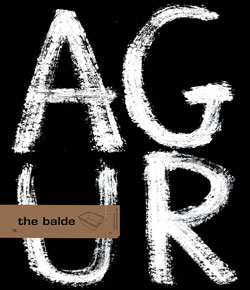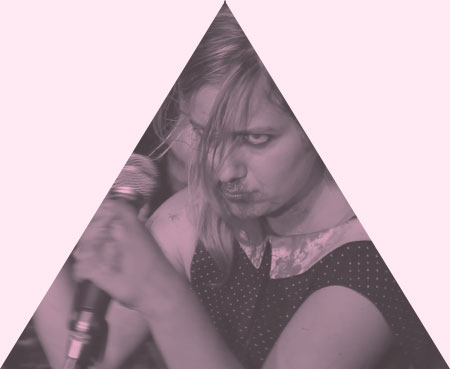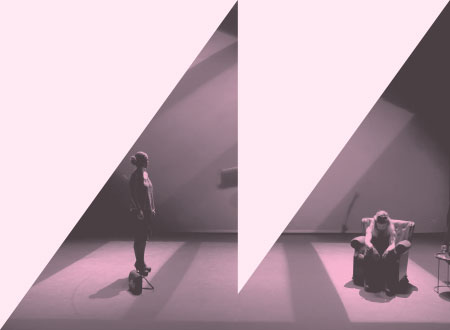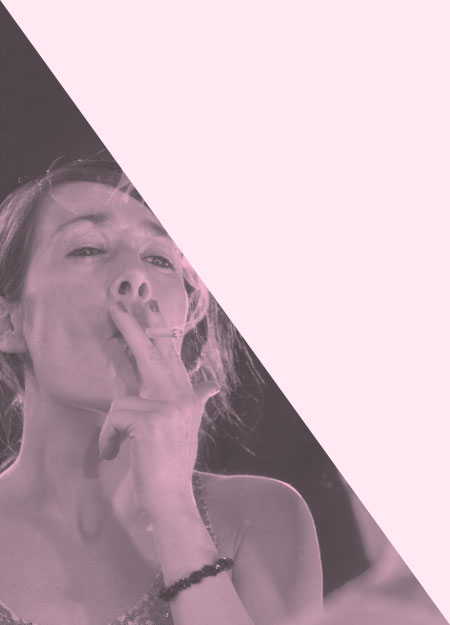malmö myriam gartzia
The Khea Ziater theatre group have just opened their cinematic theatre production Malmö. The play tells the story of Claudia and Saga (played by actors Maria Urzelai and Ainhoa Jauregi). It is one of revenge and there is no lack of hate, drugs, spilt blood and moments of madness throughout the play. Khea Ziater have once again brought together two disciplines, film and theatre, as only they know how to enhance the narrative of the story. We met up with Alex Gerediaga, director of Malmö, to talk about this play that we won’t often get a chance to see in Basque. What is Malmö? How did Khea Ziater’s latest cinematic theatre play come about?
Malmö came from the need to work through the medium of Basqu because if you only work in Spanish, you’re very limited to what you can do in The Basque Country. This time round, we prioritised Basque and we’ll tour the play in Spanish next October.
In previous productions you have also done two versions, one in Basque and the other in Spanish.
Yes, that’s right. But our last play, our first cinematic theatre production, Not Never in Time, was only in Spanish because actor Arrate Etxebarria doesn’t speak Basque, and had we done it in Basque, we would have had to change actors and filmed everything all over again. I really didn’t want to force the whole thing too much.
The Arriaga Theatre in Bilbao came to us for the Gelatxo programme, and needing to write something in Basque for that was how Malmö came about.
Why cinematic theatre? Is the label yours?
Our idea is to mix and complement audio-visual narrative and stage narrative so that the spectator follows the story from the screen to the stage and back from the stage to the screen. In this case, the film is more than a simple complement, the film scenes tell us what the stage ones cannot and vice versa. Malmö is the story of a struggle and it simply wouldn’t be possible to tell the story of this violent clash only on the stage. It wouldn’t be believable. The whole idea is to make use of what cinematography brings to the table, but without being betraying the stage acting element. I mean, at the end
of the day, we are talking about a play.
On the other hand, I’m not too sure that you could say the label is ours. We’re not doing anything new here. But I would say that our cinematic theatre is part of how we label our development. In recent years, it’s become very common to see projected images and live stage acting mixed together. New things are happening and there are a lot of opportunities out there, but what I don’t want is for the film sequences to be decorative addition to the story. Both disciplines must be key elements of the narrative.
You can’t get away from stories about women.
The last three plays have been like that, it’s true. I see them as a kind of trilogy. In the play Satisfaktion I worked with actor Maria Urzelai, in Not Never in Time it was with Arrate Etxebarria, and in Malmö Arrate and Maria will do it in Spanish whereas Maria will work with Ainhoa
Jauregi in the Basque version. It’s been kind of an unconscious thing...
and as regards Malmö, well, it’s true that it’s not typical to see two female leads in a violent action thriller. It’s strange. We wanted to get
away from the norm if you like, you know, catch the public unawares.
Mikel Somiñona has written the text in Spanish and Jon Gerediaga has translated it into Basque. What was the dramaturgy work like?
The story was written by Mikel and myself, that’s the way we work. Mikel and I get together to work when the dramaturgical process so demands. Mikel writes the texts based on the structure I create and each individual scene I create. I do the dramaturgical work and he does the writing. And, yes, we wanted Jon Gerediaga to translate the text.
You’ve known Jon Gerediaga for a long time, back from the days of Mina Espazioa and the theatre group Antzerkiola Imaginarioa...
A lot of us have come through Antzerkiola Imaginarioa. But Khea Ziater also came about because we had to get away from Antzerki
Imaginarioa, not because we didn’t like it, but because we needed to follow up on our own personal development. It was a challenge to
break from that model and coming up with our own format has been anything but easy. I think that from the cinematic Not Never in Time we were able to say that we had come up with something that was
wholly our own model.
What’s your view on what’s happening in theatre in The Basque Country?
There are some really interesting groups out there, like those involved in the Artedrama platform. Then there are some other groups who
are perhaps more conventional but are doing some quality work. But overall, I would say that we need more innovation and people willing to take risks. Do we need to look at what’s happening further afield? Rather than looking to others for ideas on what to do, you need to come up with your own way of doing things. But it can be vertiginous, and at the end of the day, you have to be able to show your work and the municipal curators are really afraid of programming anything that strays too far from the conventional.
I self-censure myself in the sense that I need to work in The Basque Country. Innovative proposals are unwelcome and that affects the writers and creators. Creation in not a problem in The Basque Country, it’s having the opportunity to show that creation to the public. At the end of the day, you can’t create work just to put it on at a couple of ‘out there’ festivals. That said, the public is a lot smarter than curators give them credit for.
Malmö came from the need to work through the medium of Basqu because if you only work in Spanish, you’re very limited to what you can do in The Basque Country. This time round, we prioritised Basque and we’ll tour the play in Spanish next October.
In previous productions you have also done two versions, one in Basque and the other in Spanish.
Yes, that’s right. But our last play, our first cinematic theatre production, Not Never in Time, was only in Spanish because actor Arrate Etxebarria doesn’t speak Basque, and had we done it in Basque, we would have had to change actors and filmed everything all over again. I really didn’t want to force the whole thing too much.
The Arriaga Theatre in Bilbao came to us for the Gelatxo programme, and needing to write something in Basque for that was how Malmö came about.
Why cinematic theatre? Is the label yours?
Our idea is to mix and complement audio-visual narrative and stage narrative so that the spectator follows the story from the screen to the stage and back from the stage to the screen. In this case, the film is more than a simple complement, the film scenes tell us what the stage ones cannot and vice versa. Malmö is the story of a struggle and it simply wouldn’t be possible to tell the story of this violent clash only on the stage. It wouldn’t be believable. The whole idea is to make use of what cinematography brings to the table, but without being betraying the stage acting element. I mean, at the end
of the day, we are talking about a play.
On the other hand, I’m not too sure that you could say the label is ours. We’re not doing anything new here. But I would say that our cinematic theatre is part of how we label our development. In recent years, it’s become very common to see projected images and live stage acting mixed together. New things are happening and there are a lot of opportunities out there, but what I don’t want is for the film sequences to be decorative addition to the story. Both disciplines must be key elements of the narrative.
You can’t get away from stories about women.
The last three plays have been like that, it’s true. I see them as a kind of trilogy. In the play Satisfaktion I worked with actor Maria Urzelai, in Not Never in Time it was with Arrate Etxebarria, and in Malmö Arrate and Maria will do it in Spanish whereas Maria will work with Ainhoa
Jauregi in the Basque version. It’s been kind of an unconscious thing...
and as regards Malmö, well, it’s true that it’s not typical to see two female leads in a violent action thriller. It’s strange. We wanted to get
away from the norm if you like, you know, catch the public unawares.
Mikel Somiñona has written the text in Spanish and Jon Gerediaga has translated it into Basque. What was the dramaturgy work like?
The story was written by Mikel and myself, that’s the way we work. Mikel and I get together to work when the dramaturgical process so demands. Mikel writes the texts based on the structure I create and each individual scene I create. I do the dramaturgical work and he does the writing. And, yes, we wanted Jon Gerediaga to translate the text.
You’ve known Jon Gerediaga for a long time, back from the days of Mina Espazioa and the theatre group Antzerkiola Imaginarioa...
A lot of us have come through Antzerkiola Imaginarioa. But Khea Ziater also came about because we had to get away from Antzerki
Imaginarioa, not because we didn’t like it, but because we needed to follow up on our own personal development. It was a challenge to
break from that model and coming up with our own format has been anything but easy. I think that from the cinematic Not Never in Time we were able to say that we had come up with something that was
wholly our own model.
What’s your view on what’s happening in theatre in The Basque Country?
There are some really interesting groups out there, like those involved in the Artedrama platform. Then there are some other groups who
are perhaps more conventional but are doing some quality work. But overall, I would say that we need more innovation and people willing to take risks. Do we need to look at what’s happening further afield? Rather than looking to others for ideas on what to do, you need to come up with your own way of doing things. But it can be vertiginous, and at the end of the day, you have to be able to show your work and the municipal curators are really afraid of programming anything that strays too far from the conventional.
I self-censure myself in the sense that I need to work in The Basque Country. Innovative proposals are unwelcome and that affects the writers and creators. Creation in not a problem in The Basque Country, it’s having the opportunity to show that creation to the public. At the end of the day, you can’t create work just to put it on at a couple of ‘out there’ festivals. That said, the public is a lot smarter than curators give them credit for.





